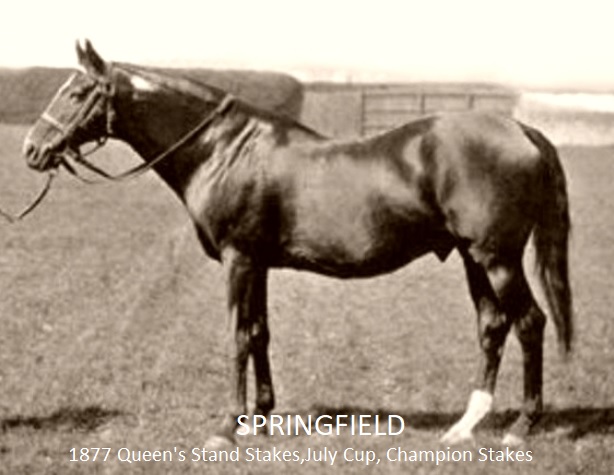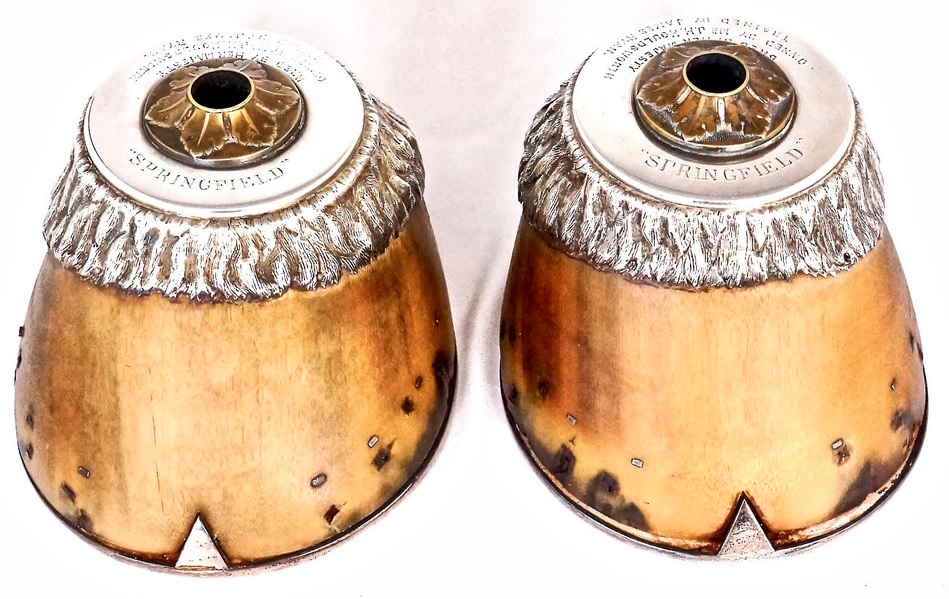
I am grateful to David Copland for the pair of hooves of Springfield shown below:

Royal Ascot: King's Stand Stakes
The King's Stand Stakes was created as a result of bad weather at Royal Ascot in 1860. Heavy rain made it impossible to run the Royal Stand Plate over its usual distance of 2 miles, so it was shortened to 5 furlongs on the only raceable part of the course. The amended version was called the Queen's Stand Plate, and it subsequently became the most important sprint at the Royal meeting. For a time it was open to horses aged two or older. It was renamed the King's Stand Stakes following the death of Queen Victoria and the accession of King Edward VII in 1901. The present system of race grading was introduced in 1971, and the King's Stand Stakes was given Group 1 status in 1973, although it was downgraded to Group 2 level in 1988, but regained its Group 1 status in 2008 and is contested on the opening day of the Royal meeting. |
| Queen's Stand Plate 1877 | Group 1 | 5 furlongs | ||
| Pos. | Horse | Jockey | Age/weight | Owner |
| 1 | SPRINGFIELD | T Osborne | Jimmy Ryan 4-9st 12lbs | Mr J H Houldsworth 8/13 fav |
| 2 | ECOSSAIS | Jem Goater | Tom Jennings 6-9st 8lbs | Mr Tom Jennings 2/1 |
| 3 | WARRIOR | Glover | William Goater 3-8st 12lbs | Mr Gomm 33/1 |
| The Queen's Stand Plate took place on Tuesday 12th June 1877 and the winner, a bay horse by St Albans out of Viridis, won a first prize of a piece of plate valued at 200 sovereigns, and stakes of 100 sovereigns from 10 subscribers (equivalent to £47,000 in 2020). | Over round 100% | |||
 |
||||
I am grateful to David Copland for the pair of hooves of Springfield shown below:
|
||||
| King's Stand Stakes | Group 1 | 5 furlongs | 1860 | ||||||
| 1860 | 1861 | 1862 | 1863 | 1864 | 1865 | 1866 | 1867 | 1868 | 1869 |
| 1870 | 1871 | 1872 | 1873 | 1874 | 1875 | 1876 | 1877 | ||